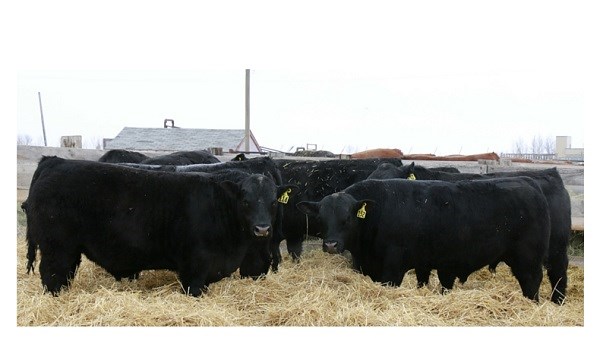This week let’s look back over the past six months, reviewing what was said in these columns and offering an update.
Jan. 11, 2016:
What was said:
The long-term cattle price cycle points down. A long-term 10-12-year cycle peak for prices and profits occurred about a year ago. The next low for the cycle is some distance down the road. We suggested some veteran producers might want to sell out or scale down. “Getting grey? Consider exiting if you don’t want to farm another 10-12 years for the next cyclic boom.”
What happened?
It was a timely warning. In general, the past six months have seen lower prices and profits for feedlot operations, backgrounders, cow-calf operators, breeding stock… and there have been cases of very severe losses in some sectors.
What’s next?
We may be getting down to a low ebb but it is still eight to 10 years before you can get ready for the next cycle boom.
Jan 25:
What was said:
Markets are volatile and not easy for producers trying to manage risk with futures hedging positions. We observed that some producers, to their detriment, had been short-hedged during the bull market on the way up into the great record-high peak of late 2014. Some gave up on the short-hedging idea just when it would have worked, on the way down from late 2014 to Jan 2016. We offered some tips for safe and successful hedging.
What happened?
Turns out hedging could have helped mitigate some of the losses of the bear market which continued in the five months following this post.
What’s next?
With live cattle futures deeply discounted to cash prices and reflecting very bearish ideas from now through into 2017, there are not clear hedging opportunities on the futures board.
Feb. 2:
What was said:
A USDA cattle inventory report contained some bad news for prices, and some good news: The bad news was, expansion was clearly happening. “Herd expansion equals more beef down the road. More beef means lower prices. The good news? “The shift is gradual.”
What happened?
The expansion of the US herd continues and remains a gradual force behind the rebuilding of what you might call the “beef production factory.” Unfortunately, the market impact has already been felt very severely.
What’s next?
Long-term outlook is for beef output to keep rising gradually. This week the USDA projected an increase in total US beef production of 5.2% in 2016 over 2015. And the government predicted an additional 3.4% increase for 2017.
Feb 22:
What was said:
A review of various cycles was presented. We talked about the super-cycle peak of 2014 in the US market, and the concurrent 10-12 year peak. We advised it would be a long time before that great peak would be revisited. We also talked about the cattle:hog ratio, advising that cattle would maintain a wider spread over hogs than in the 1970s but would not retain its present extreme differential over hogs.
What happened?
Prices continued in weak trends. And the analysis for the cattle/hog relationship was valid, with cattle losing ground in relation to hogs.
What’s next?
The greatest decline from the cyclic peak is past, and if cattle prices decline further from here their losses will be very minor compared to what has already happened. The cattle:hog ratio has declined sharply. Now though, cattle should do better than hogs over the course of the next few months, as the hog market faces a typically seasonally weak bias from summer through into late-year.
March 7:
Canada’s inventory report pegged beef heifers held for breeding up 4%, signaling modest expansion. However, the beef cow herd was not growing and the total inventory was very little changed.
What happened?
Still don’t see signs of widespread, aggressive expansion in Canada, just modest expansion, mainly centered in the West.
What’s next?
Expect continued modest herd expansion – emphasis on “modest.”
March 21:
What was said:
More on the cattle to hog ratio and some related demand-side comments. “The beef price has to be relatively high to discourage high per capita consumption of beef; it has to give the population economic incentives to eat less per person than was the case in decades past.”
What happened:
The marketplace has indeed functioned to keep cattle at a strong premium over hogs (beef at a strong premium over pork). Although down from the peak of late 2014, the cattle:hog ratio is still above the low end of the range that has prevailed the past 15 years and well above the range before that.
April 7:
What was said:
The cattle business is competitive, with Brazil elbowing its way past the US and becoming the largest beef exporter in the world.
What happened:
Brazil is further cementing its place at the top of the heap of world beef sellers. Back in June it was reported the country had overtaken Australia as the largest beef supplier to China. Brazil’s exports to China are expected to remain strong, due to a weak domestic currency, a stable supply and cheaper prices compared to Australia and other competitors. A poor domestic economy also means Brazilians are eating less beef themselves, freeing up more for the export market.
April 21:
What was said:
The 10-12-year cattle cycle, as well as the longer-term super-cycle, are both in downswings. We took a look back at the various cycles through history and described what happened after each boom peak.
What happened:
We predicted an important low sometime between mid-2017 and late 2020. It remains to be seen if that will come through.
May 5:
What was said?
After a long tumble in futures, it was late to be bearish on the cattle market. We noted the sharp drop in the December future down to the US$111-112 cwt area in late April, a cliff drop from the seasonal high earlier in March when the nearby contract was trading up around $140. Attention was drawn to the fact the futures market was projecting continued weak prices out into 2017. Conclusion was, the market was excessively bearish, and dire predictions being made by the futures market wouldn’t actually come through.
What happened?
After this post appeared on the website, the December future did in fact rally, moving up to around $119 by about mid-May. However, those gains didn’t hold. After chopping mostly sideways through June, the December contract fell to a fresh five-year low on Monday of this week, taking out the late April low in the process.
What’s next?
Again the market looks very oversold and seems to be overplaying the bearish risks.
May 24:
What was said:
The question was posed: Where’s the low for feeder futures? Answer: “The long-term 20-25 year chart depicts a crashing bear market that could be getting close to an important low. If a low has not already come into place, look for support for the feeder cattle index and nearby futures in the $130-135 area.”
What happened?
Futures endured weakness the next three weeks and then bottomed out in the price zone anticipated. The nearby August future notched a low of $134.25/cwt on June 20, and then bounced.
What’s next?
If corn prices rally strongly on a weather problem the next several weeks, and if live cattle prices stay soft, feeder prices could take another step down. Barring those two bearish factors, expect the market to continue to find support in the $130-135 zone.
June 9:
What was said:
Current weather conditions in much of the rangelands and hay production areas of Canada and the US are pointing toward further herd expansion.
What happened?
At the time of this post, American pasture conditions were pegged by the USDA at 66% good to excellent, up 3 points from a year earlier and well above the 10-year average of about 53% good to excellent. As of July 10, US pasture conditions were rated lower, at 57% good to excellent – not a big surprise given the time of year and the typical decline in precipitation. However, conditions are still better than average. Indeed, in the largest cattle production state of Texas, pasture conditions were rated 59% good to excellent as of July 10, way up from the 2011 late spring low of just 9% good to excellent. The easy availability of feed provides US producers with a continued incentive to expand.
June 27:
What was said:
A declining domestic herd has made China a tempting export target for US beef. But while other countries fill that need, the US still remains largely shut out of the market, one of just a few international destinations that never reopened to American product following the discovery of BSE in a Washington State dairy cow in 2003.
What happened:
The two countries are still negotiating an agreement that would provide access to the Chinese market for American beef. In fact, the US beef industry has made China a top trade priority. However, it remains uncertain when the two sides may finally broker a deal.
Brought to you in partnership by:



